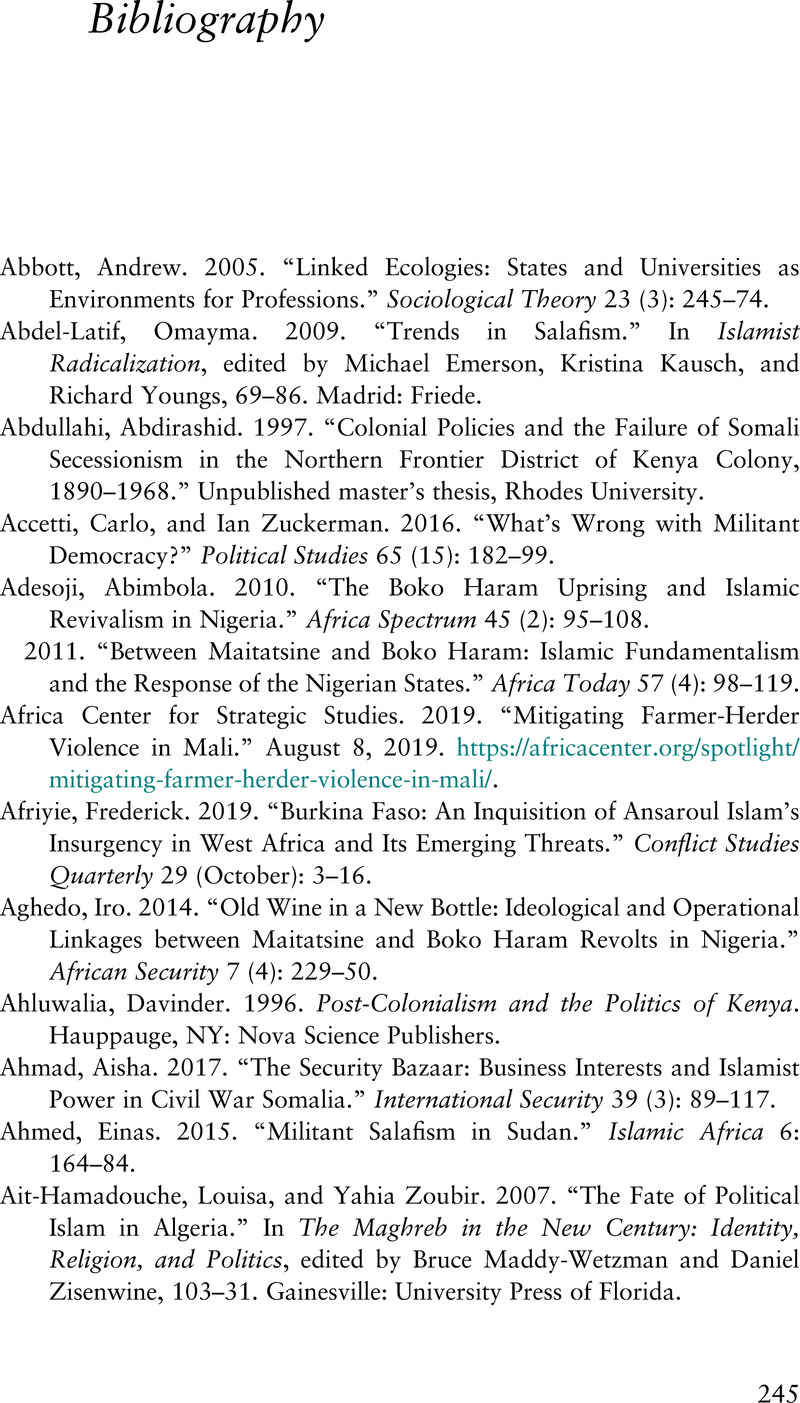Book contents
- Salafism and Political Order in Africa
- African Studies Series
- Salafism and Political Order in Africa
- Copyright page
- Dedication
- Contents
- Figures
- Maps
- Tables
- Preface
- Introduction
- 1 Concepts, Cases, and Variation
- 2 Critical Junctures and the Formation of State-Led National Islamic Associations
- 3 Missed Opportunities and the Formation of Islamic Federations
- 4 The State as Demobilizer of Activist Salafism
- 5 The State as Enabler and Radicalizer of Activist Salafism
- 6 From Theory-Generation to Theory Testing
- 7 Autocratic Legacies, the State, and Salafism in Africa
- Conclusion
- Appendix I
- Bibliography
- Index
- African Studies Series
- References
Bibliography
Published online by Cambridge University Press: 06 August 2021
- Salafism and Political Order in Africa
- African Studies Series
- Salafism and Political Order in Africa
- Copyright page
- Dedication
- Contents
- Figures
- Maps
- Tables
- Preface
- Introduction
- 1 Concepts, Cases, and Variation
- 2 Critical Junctures and the Formation of State-Led National Islamic Associations
- 3 Missed Opportunities and the Formation of Islamic Federations
- 4 The State as Demobilizer of Activist Salafism
- 5 The State as Enabler and Radicalizer of Activist Salafism
- 6 From Theory-Generation to Theory Testing
- 7 Autocratic Legacies, the State, and Salafism in Africa
- Conclusion
- Appendix I
- Bibliography
- Index
- African Studies Series
- References
Summary

- Type
- Chapter
- Information
- Salafism and Political Order in Africa , pp. 245 - 281Publisher: Cambridge University PressPrint publication year: 2021



